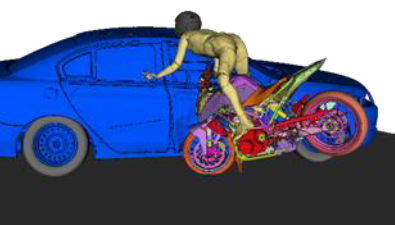Equal Safety for the Whole Population of Powered Two-Wheeler Riders
Powered two- and three-wheelers (PTWs), represent a compact mode of transportation whose global numbers nearly tripled between 2011 and 2020. This was, however, also accompanied by a 30% increase in fatalities, in contrast to a general reduction in car occupant fatality risk. Studies have shown that females and obese riders are of higher risk compared to males and normal BMI riders. Other studies have shown that PTW type/size and the impacted object/vehicle influence the crash kinematics and injury outcome. Severe thorax and head injuries in PTW to side of vehicle crashes are of particular concern. While helmets are widely used, no protection of similar efficiency exists for the thorax.
The goal of the proposed project is to develop efficient tools and methods to enable analysis of PTW riders’ injury risk, and countermeasure effectiveness, under the influence of variability in rider size/sex, rider posture, and PTW/impacted vehicle sizes and types.
Traffic safety benefit: Making the societies transport safe and equal (in particular for both sexes), while also allowing for an environmentally friendly mode of transport.
Key words: PTW and Motorcycle, SAFER HBM, Positioning and morphing tools, Variability in rider size/sex and postures, Countermeasure evaluations

